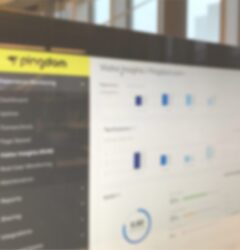[ad_1]
There are reportedly over 1.7 billion websites, making it almost impossible for yours to stand out unless your name is Jeff Bezos and you started a little-known company called Amazon. That’s why, when our customers asked us what we would suggest to help their website perform better, we thought we’d whip together 8 quick and easy hacks that can easily be implemented but make a big difference.
1. Check your page speed
According to SEMRush –
“if your site loads in 2.9 seconds, it is faster than approximately 50% of the web. if your site loads in 1.7 seconds, it is faster than approximately 75% of the web. if your site loads in 0.8 seconds, it is faster than approximately 94% of the web.”
SEMRush
So, if you were to ask yourself these 3 questions, would you know the answers off the top of your head?
- How long does your website take to load on a desktop?
- How long does your website take to load on mobile?
- When was the last time you checked your page speed?
If you don’t know the answer to these, or the answers are that your website is slower than the 2.9 seconds SEMRush estimates, then you should be using a tool like Scopify to see why. Is it a specific page that’s slowing your website down? Is it your server? Is it because of your Core Web Vitals? These are all questions you need to find the answer to so you can increase your website page speed.
2. Use an SEO tool like SEMRush
SEO has never been more important, especially when there are more ads than ever for any given search result in Google. Even if you manage to nab the number one spot for a keyword like “uptime monitoring”, for example, you’re still way below the fold now. If you’re less than 3rd place, you’re in an even more difficult place than say 3 years ago. So what can you do to help your organic traffic? Use SEMRush. This tool is a powerhouse when it comes to SEO; it can tell what keywords are performing and in which country, how much traffic those keywords get, the intent behind the search, and where you rank against your competitors for that keyword. And that’s just the tip of the iceberg, there’s so much more inside the treasure trove of SEMRush that any savvy website manager wouldn’t go another day without having an account (and no, we’re not working to commission for SEMRush – we just love their product!).
3. Use a website monitoring suite
I know what you’re thinking, a big shock that we’ve added website monitoring to this blog. But hear me out on this one because it really is imperative to your website performance to have a tool like ours in place.
Website downtime affects every website from Amazon to Facebook (yes, even them), and it costs more than you can imagine, depending on your average revenue per second, minute, and hour. This figure can sometimes reach the millions of dollars range, and in turn, cause a substantial drop off in share prices, which happened to Twitter not so long ago.
But fear not fellow website owners, Scopify will alert you the second your website goes down, so you can do something about it before you lose the big bucks. Better still, you update your public status page to tell your customers what’s happened and when your website is likely to be back online.
That’s not all our website monitoring suite offers for your website either; page speed monitoring, SSL monitoring, domain monitoring, and server monitoring too. Fancy a demo?
4. Invest in Google Optimize for a/b testing
Testing, testing, testing. There are few things more important to your website than testing, especially when it comes to content marketing. How do you know what copy, colour, or button will work best with your audience if you don’t test it? 9 times out of 10, the result of an A/B test will surprise you, mainly because we tend to think what we would choose, or how we’d behave online, will be the same as our website visitors, but that’s just not the case.
We use Google Optimize to constantly check that our website is performing to the best of its ability. We strongly believe that you should too.
5. Analyse the results from HotJar
Google Optimize and HotJar almost go hand in hand when it comes to understanding how visitors interact with your website. HotJar will show you users activity on your website, i.e. if they hovered over a button but didn’t click it, or if they got to the bottom of the page but didn’t go any further. This helps you to understand exactly what is working on your website, and what isn’t, making sure you can change things up to improve your average pages per session, time on page, and ultimately, conversions.
[ad_2]
Source link


